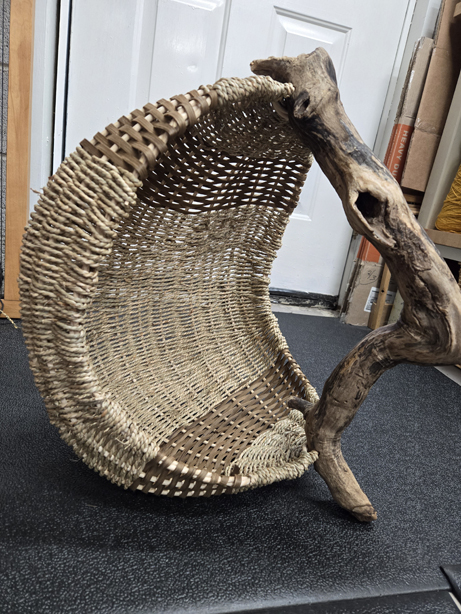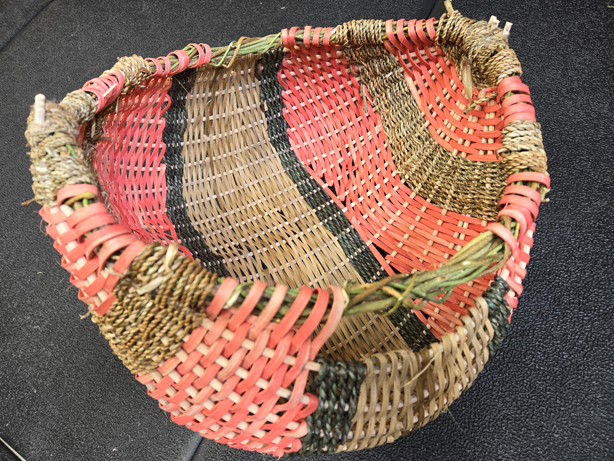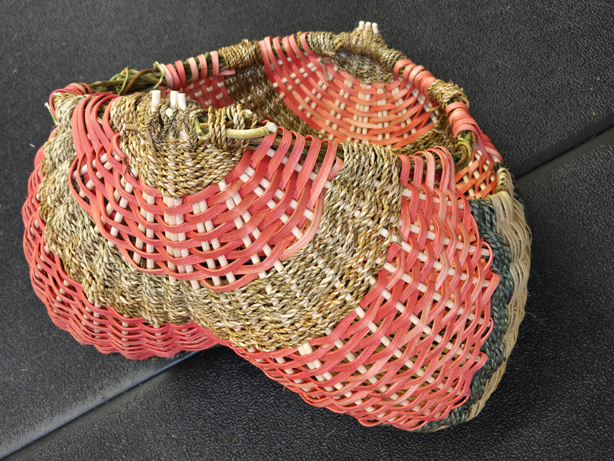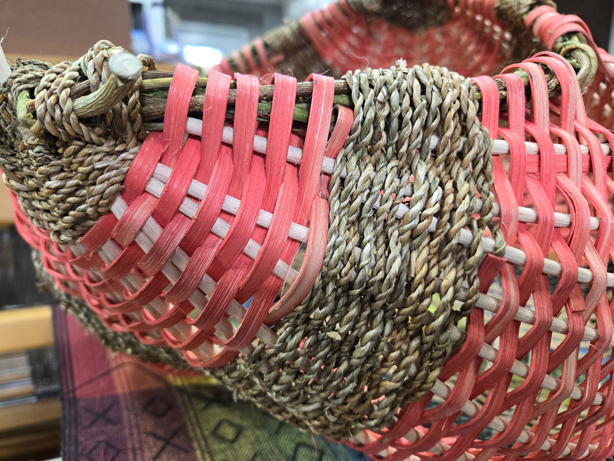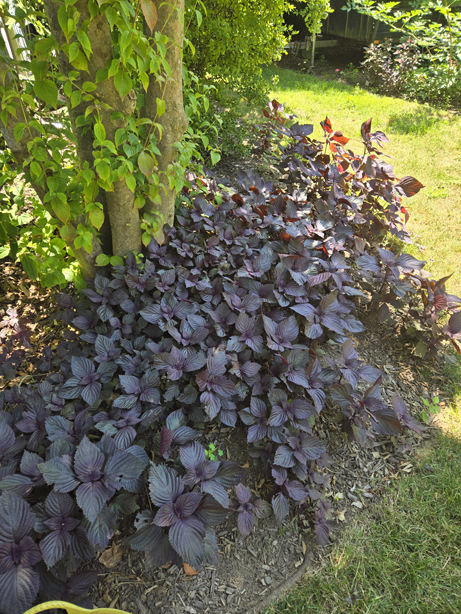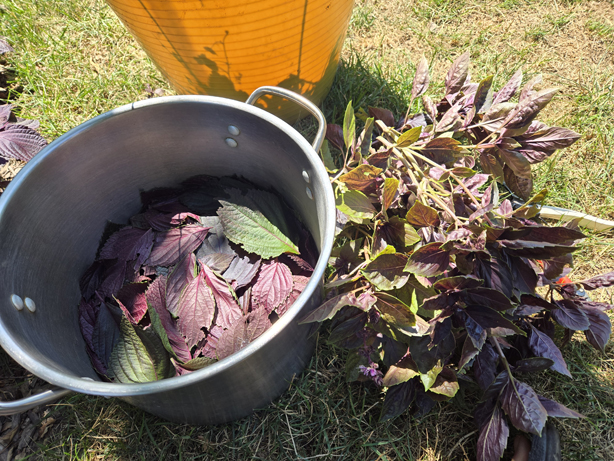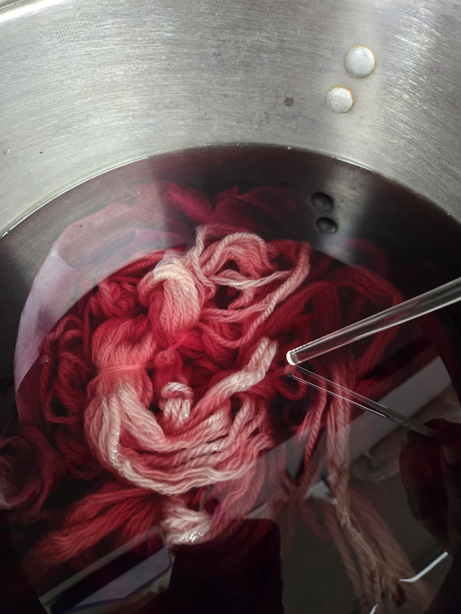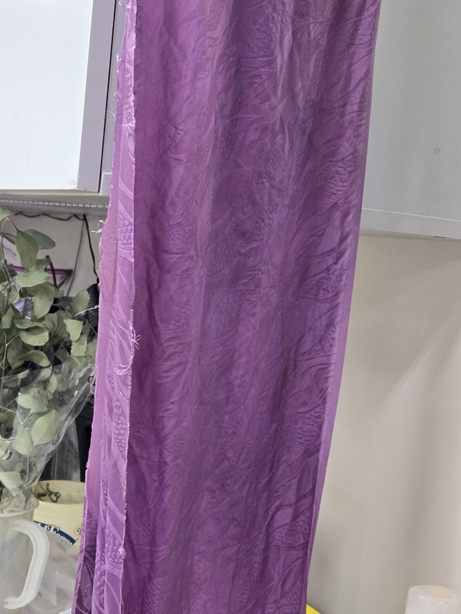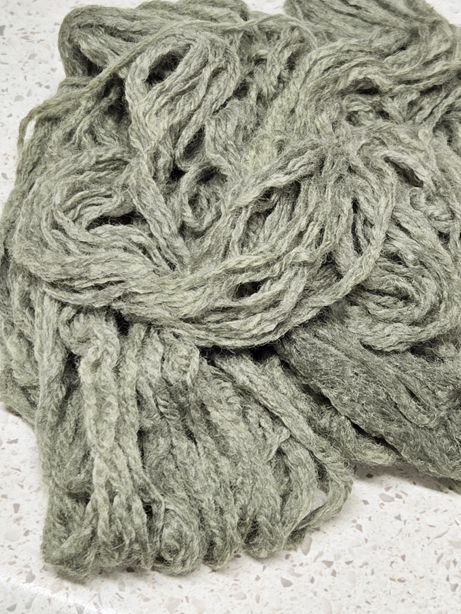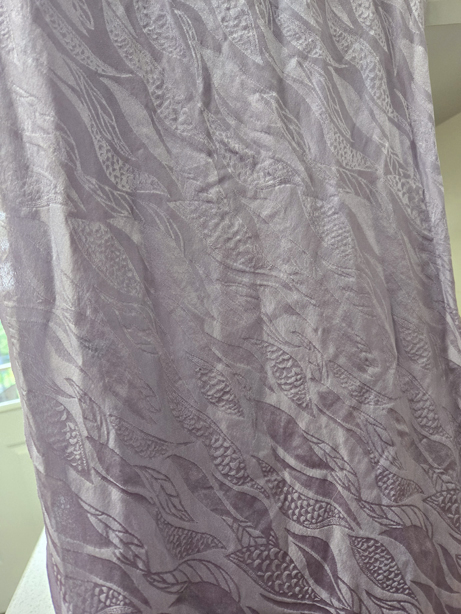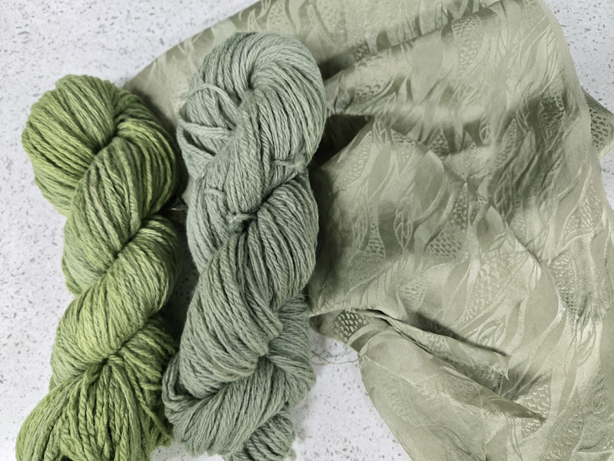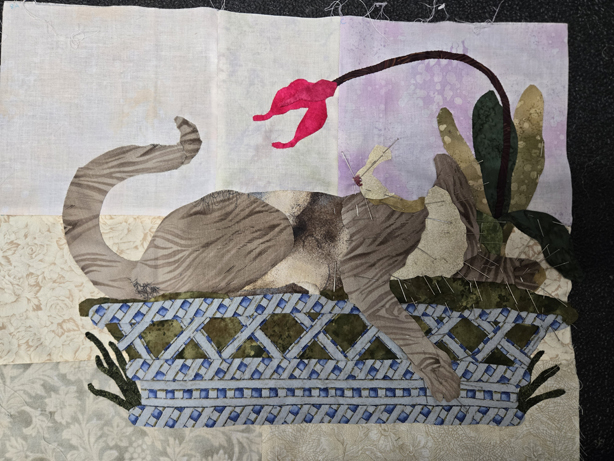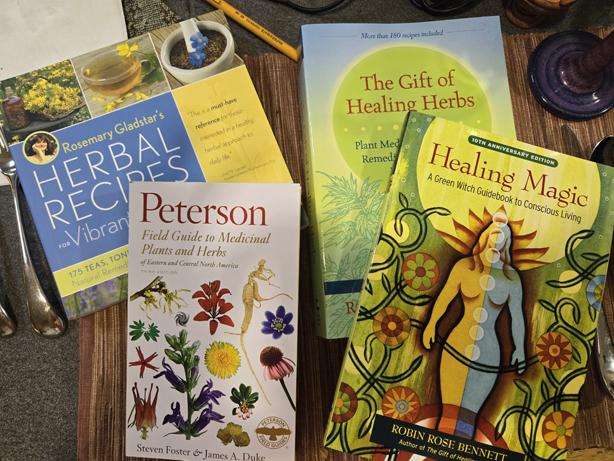I’m learning how to say no, it is coming quite easily at this point in my life, but people don’t want to hear it… Just saying… They can be persistent, these people…
I’ll start with the biggest thing first. My retrospective at County College of Morris, probably one of the best experiences of my lifetime, came down yesterday. It was an amazing 6 month run, I’m so very very grateful for the college that sponsored this event, for the gallery director who was the most amazing professional I’ve ever worked with, and for all supporters that came from near and far, some flying in from California, St. Louis, Florida, and some driving in from upstate New York, Virginia, and all points in between. Even friends from High School made the couple hour trek from southern NJ. I got a lot of free lunches out of it! The overwhelming positive response made me feel like my life and my work (because they are intertwined) made a difference. If you missed the show, and want to watch the documentary we put together, click here.
But all good things come to an end, and yesterday, helped by a fellow guild member, we had the show completely disassembled, and loaded for the first run home. I held onto about 35 of the 41 dressforms I purchased for the show, various venues requested some for their own exhibit spaces. My guild, the Shakespeare Theatre of NJ, Peters Valley, and actually, the Handweaving Museum in Clayton, NY.
So one of the persistent themes throughout this exhibit, was the amount of people who encouraged me, or sometimes demanded of me that I take this show on the road. I couldn’t make them understand that this was a once in a lifetime opportunity, a beautiful swan song to an amazing career, but I am done. No more… No more exhibiting, no more teaching on the road, no more. Nevertheless they persisted…
As it turns out, one of the people who attended the exhibit, who drove a long way, had a connection to the Handweaving Museum, part of the Thousand Island Arts Center, up on the St. Lawrence River in NY. I know of the museum, haven’t visited myself, but they put on an amazing conference on weaving history, which has been remotely accessed the last couple of years. I’ve already signed up for this October.
One thing led to another, and emails started flying back and forth, and there is a very positive possibility, that the museum will take part or all of my collection of work. It is still in the early stages, and they are building a new facility to house their ever growing collection, but knowing that my work can live on after me, in a way that people can handle the pieces, research the pieces, and learn from them, makes me really really happy. So fingers crossed, I’m hoping within a couple of years, this large collection of handwoven garments and wall pieces will find a permanent home. Plus they want 10 dressforms…
Meanwhile, three carloads of stuff is now in my living room. Or was until late last night.
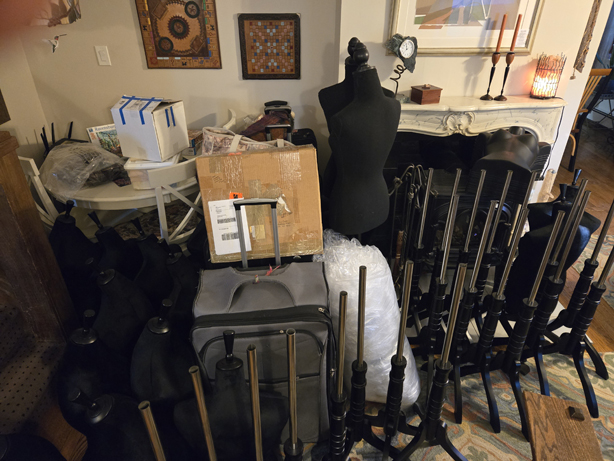
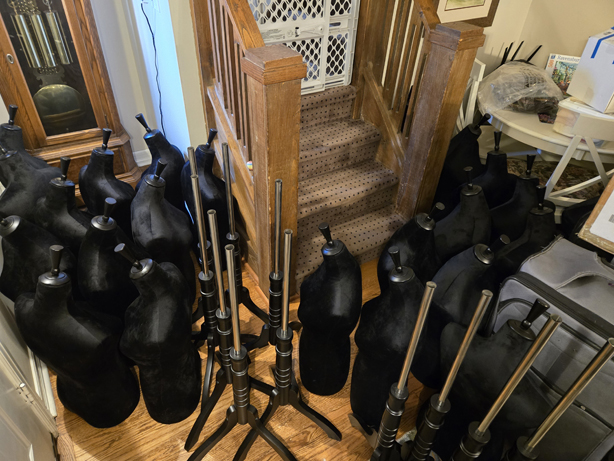
I managed to haul all of the dressforms, and all of the assorted containers and bags up to the middle guest room, and even one of the very very large suitcases, which I used for years teaching, dragging 170 pounds of luggage around the country. I never thought I’d need these suitcases again, but I dug them out of the attic Thursday night. I emptied one of them this morning. There are still five in the living room. One a day?
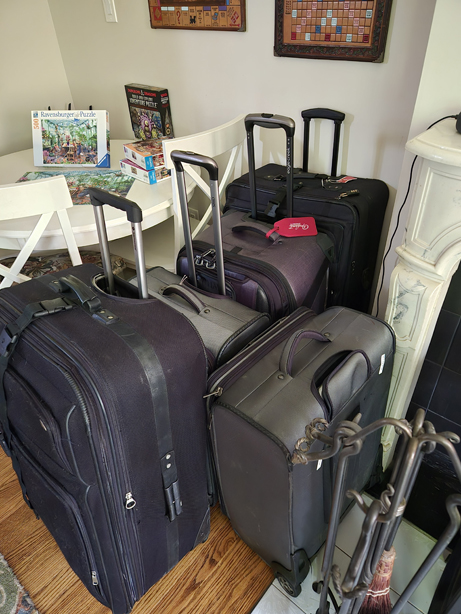
Meanwhile, the largest one, finally said enough. As I wheeled it from the car up the steps, the wheels broke apart, and left a trail. It has been an old faithful friend, and now it can truly retire…
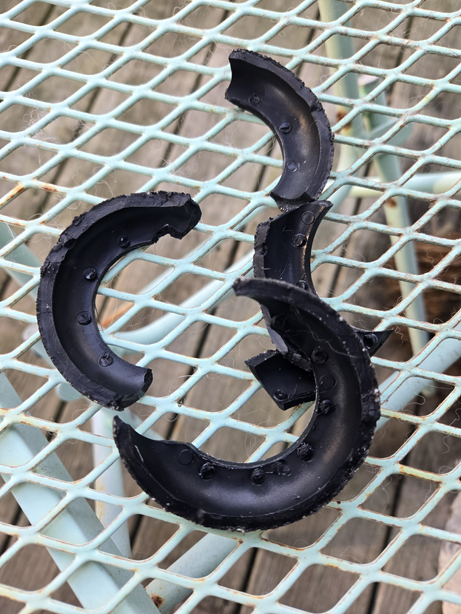
I’ve talked ad nauseum about my gardens, which I had planted this spring. I’m completely unfamiliar with all the native perennials, since my property largely consisted of Japanese Barberry and Burning Bush. So it is with joy and discovery that I watch things fill in each day, create a grouping and bloom. The diversity of bugs and pollinators has been remarkable. I even think I caught sight of a monarch butterfly at one point. (There is a lot of milkweed on the property). I got a decent closeup of a swallowtail on the Joe Pye Weed. I have a lot of Joe Pye…

The gardens are ever changing, and the restructuring of the footprint, to accommodate intense rainfall that comes pouring off the mountain, worked so amazingly well, that the last two storms which dumped a lot of water, were uneventful as far as the plantings go. The brown spots in the lawn are the dogs’ potty area. They run down the steps and just squat… Because they are dogs… But the lawn is mostly clover and Creeping Charlie, which is fine with me…

And my ponds are full of fish, the one by the deck has a bunch of small koi in it, and they are quite hilarious to watch, full of personality.
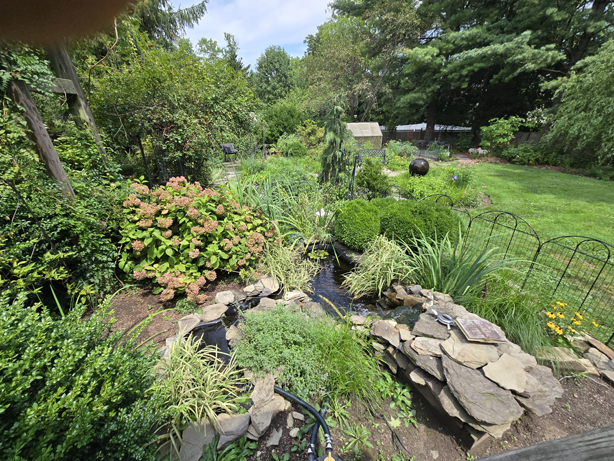
The pond by the fence, which we affectionately call “Kevin’s Pond” has some gorgeous bright orange gold fish. They look forward to the handful of food I toss in every morning.
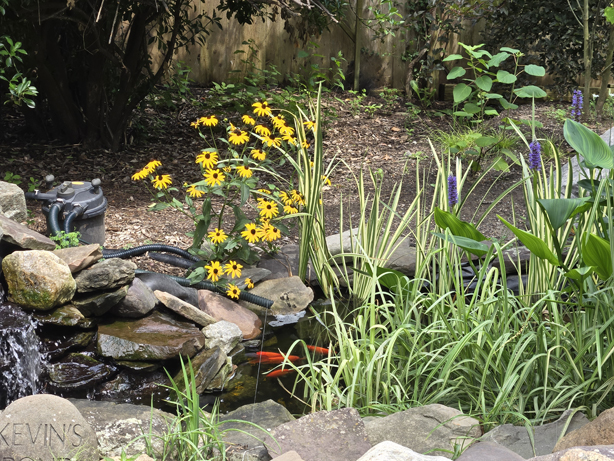
And I have a water feature which I put in after my husband died, it sits on what use to be his favorite spot in the yard. There is always some bird or insect taking advantage of the bubbling flow.
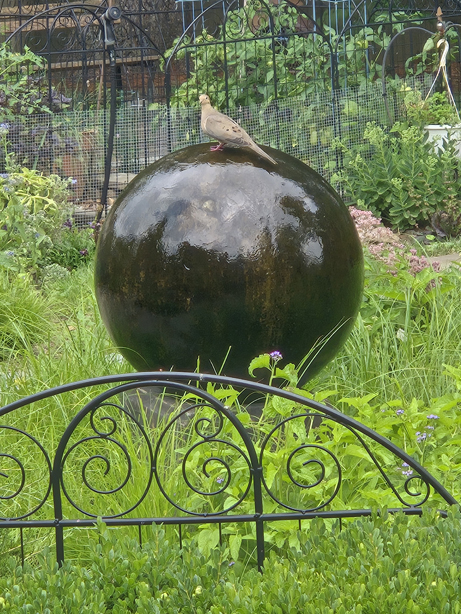
And with all of that, I continue to sign up for classes in all the things I want to learn how to do better. My sister invited me to a class her friend was giving on Flower Pounding. That is pounding flowers onto a treated cloth. I took a workshop in this last fall I believe it was, and though it was fun and the results were beautiful, everything washed out, and left me with a dull dirty looking dishtowel. The second class I took, yielded nothing. No one in the class got a single transfer of image.
This teacher did her homework, and she not only pretreated both the cellulose pounding cloth and the base with aluminum acetate, and I understand a calcium carbonate dip, which I have to investigate further, all of her students created amazing images with her array of flowers from her garden.
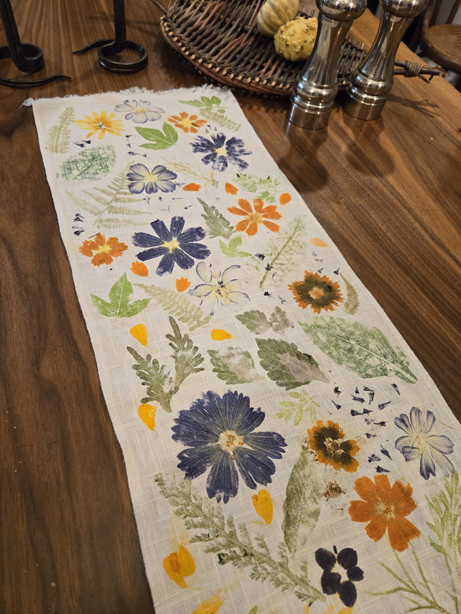
I will say I’m afraid to wash my beautiful linen/rayon table runner. But I did wash the pounding cloth, figuring I’d use it again for the same purpose, and the colors are still bright and strong, and I’m using it for a dishtowel in my studio.
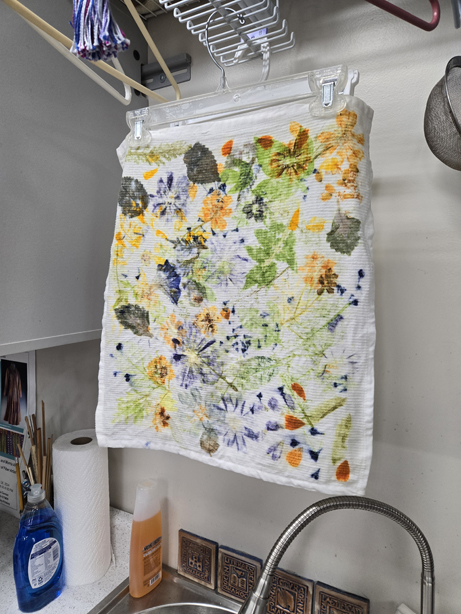
And I’ve already talked about my struggles with eco printing. I want to learn how to do this, and why things work, and the chemistry behind it, and yes, I’ve taken multiple classes in this technique but have never been happy with the results. Much of eco printing now involves natural dyes, which is a whole ‘nother field of study, and the use of iron and color blankets. (I’ve signed up for a 10 week natural dye class at Maiwa in Canada, which starts in September, obviously remote) The last class I took specifically in eco printing, again, left me with more questions than answers, and a lot of mediocre to poor results.
I signed up to take another eco printing class with Kathy Hays, a Florida artist, whom I’ve studied with before years ago, and was happy enough with the results to keep trying. She has developed a number of different classes now, available through Gumroad, and I signed up for the one called Art Scarves. It covers a lot of the natural dyeing aspect and goes into using color blankets.
She starts you with just using iron blankets and learning how to pre or post mordant. I tried some of the leaves on my property, ones that aren’t on anybody’s list of known printers, because what the heck. She also encourages you to just make samples… Like in weaving. Making samples… Great way to learn. And it doesn’t have to be anything… Even though my friends are quite persistent that they would make lovely scarves and I could sell them… No, just no. I want to learn to do this, not make more stuff to sell. Sigh…
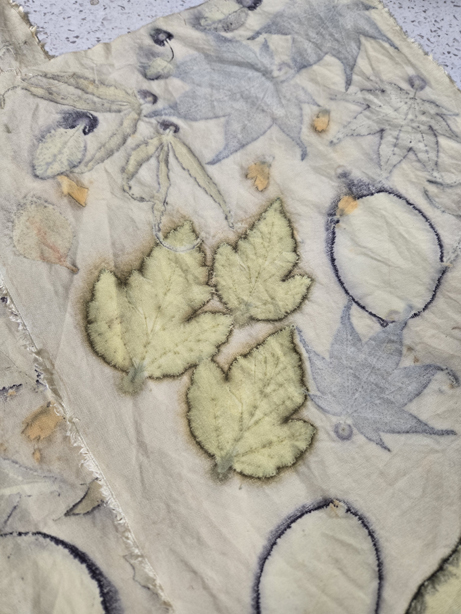
My favorite thing to dye with at the moment is my precious ninebark (Physocarpus opulifolius), a lovely native bush, that was actually growing on my property, who knew, the only native plant I had, covered by all sorts of undesirable things.
I’m learning how to make color blankets, in essence an unmordanted length of cotton which soaks up a concentrated dye, and then releases it onto the base fabric during steaming. I won’t say more than that, take the class if you want to learn… I’m really happy with the results I’m starting to get. The dye blankets used are from the left, osage orange with and without an iron sulfate pre dip, logwood, and lac (an insect), all on various types of silk from my stash.
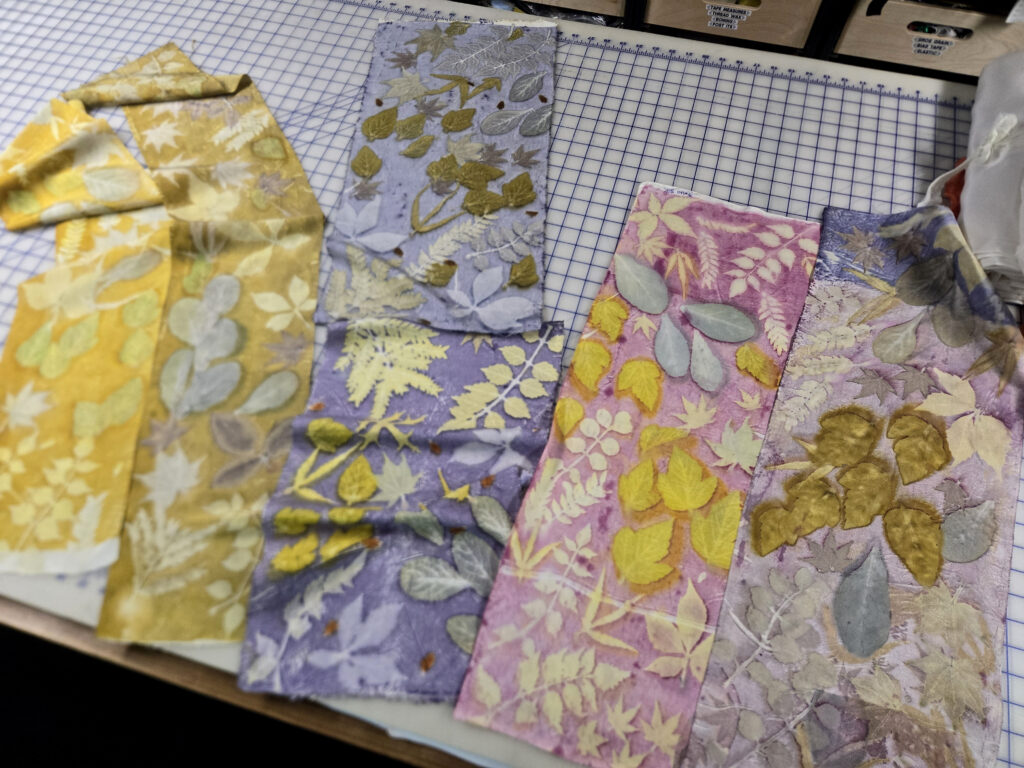
Again, the ninebark makes really beautiful prints.
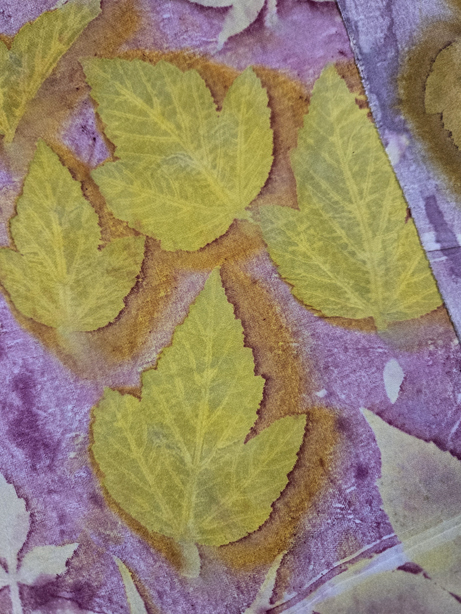
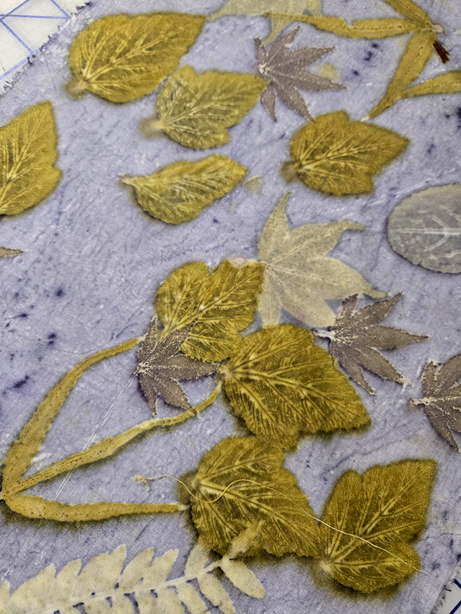
And of course, I’m moving right along on the appliquéd cat quilt. This is block 9, the center block. Once I finish the rest of this block, I can start putting all nine blocks together and then finish the blocks I couldn’t finish because paws and tails overlapped the neighboring blocks. Then a 380 piece crossvine (another native) is added and meanders through the entire quilt. This has been an immensely satisfying diversion this year, as I struggle to keep enormously busy so I don’t dwell on my son’s deployment to the middle east.
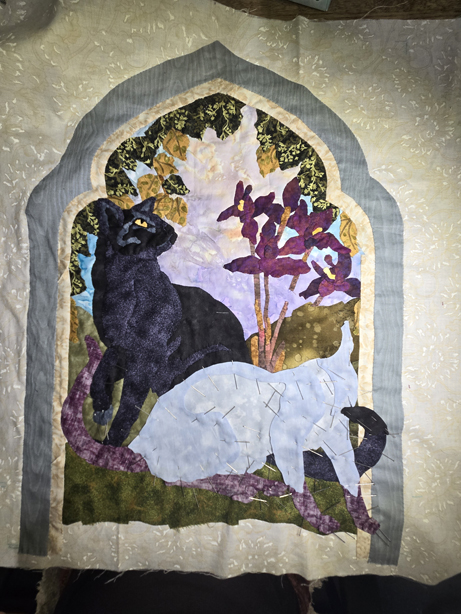
When people I haven’t seen in a while ask me how I’m doing, I can honestly say, with a huge smile, that I’m great. I feel good (largely due to the diet I’m on, Dr. Weil’s anti inflammatory diet, (as assigned by my cardiologist) and I am super busy and enjoying the adventure. Plus, what’s not to love just sitting and watching the birds and insects flit around all over my yard. I head out to Peters Valley on Friday (with a load of dressforms in the car) to take another class, this one a three-day weaving class called Textural Abstraction & Woven Imagery, which changed a bit from what I signed up for, as the teacher cancelled at the last minute, but someone else is stepping in and I’m sure I’ll take away something from it…
I play bass recorder with Montclair Early Music at a medieval festival on Sunday, at the Montclair Art Museum, so that should be a fun diversion for the day. Most of the music is pretty straightforward, easily sight-readable, Henry the VIII sort of fare, (he was a great composer of recorder music) but the finale piece is quite challenging. It is called Dragonborn, and is from a video game and it is quite an amazing composition.
Fall is approaching. Cooler weather (I hope) and new happenings in the garden, and more classes to take. I’m quite happy not teaching, not making stuff for sale, and just playing. I can be just as persistent. I earned it…
